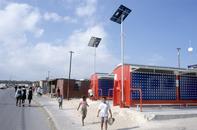The 20th Century

In 1992, representatives of over 120 countries gathered in Rio de Janeiro where they acknowledged that the climatic system is a shared global resource. By signing the United Nations Framework Convention on Climate Change (UNFCCC), they committed themselves to taking action against the problem of global warming and greenhouse gas emissions. Another gathering took place in Japan in 1997 where the Kyoto Protocol came into being.
This global agreement set targets for emissions reduction and timeframes, in which it should be done. Kyoto finally came into effect in February 2005. The agreement requires signatories to cut back on the amount of emissions produced during a set target period, the first being 2008 to 2012, as well as to encourage clean development in non-industrial countries.
Kyoto Protocol Structure
Kyoto's biggest problem was to create some kind of equity in its emissions reduction scheme. The huge polluters in the north needed to be encouraged to cut back but the system could not handicap non-industrial countries where development is needed to improve the standard of living of their populations. Kyoto's solution builds cross-subsidisation into the system.
Developed countries, which already have costly gas-emitting infrastructures driving their economies, will find it difficult to cut back. Developing countries, which have yet to build up their infrastructure to the same level, will find it easier to change their potential emissions output by switching their development plans to sustainable and renewable technology when they begin to put that infrastructure in place. Kyoto structured itself to use those countries that cannot cut back easily to incentivise and fund those countries which can.
An example would work something like this. A developer in South Africa plans to build low-cost housing with solar-heated water units. Norway funds the solar units. Norway meets its Kyoto obligations, South Africa receives 'aid' for development, and the environment benefits by not having more greenhouse gases generated to heat water for those new houses.
The currency for the transaction is the carbon credit - South Africa has carbon credits for sale in terms of solar units and Norway buys carbon credits by paying for them in cash with the principles of Kyoto to mediate. Under Kyoto, industrialised nations - so-called Annex I (one) nations - pay for non-industrialised nations - or non-Annex I (one) nations - to develop cleanly.